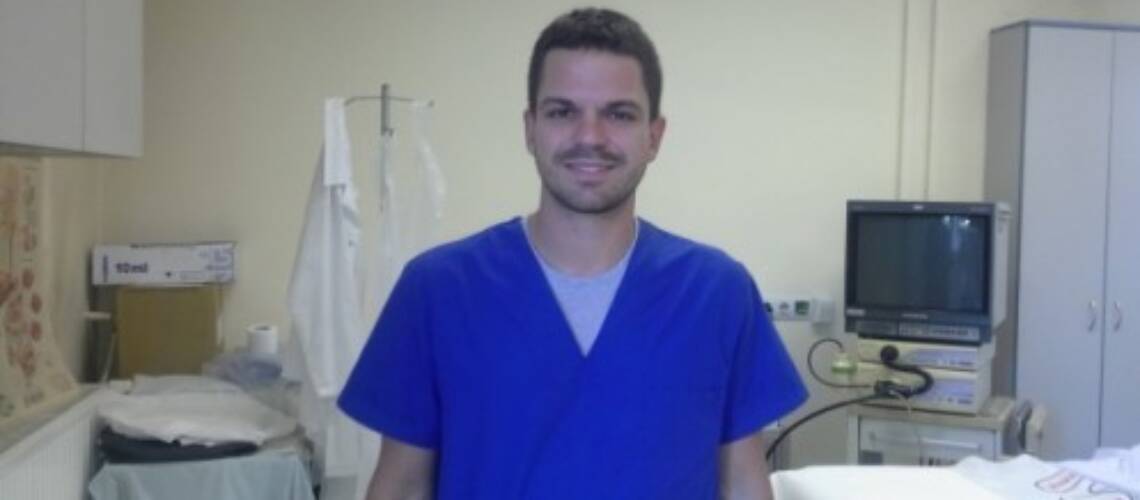Zebra tumors are a rare disease, which gastroenterologists from ISUL increasingly encounter in their practice. Every month, two such cases are discovered in the medical facility. Why are diseases classified as rare becoming more common and which ones are increasing in frequency, the answers are given by the gastroenterologist Dr. Radislav Nakov.
Patients have become more frequent in gastroenterology, in which rare diseases are detected. An example of this is people with established diagnoses, such as Wilson's disease, hemochromatosis and transretinal amyloidosis, says Dr. Nakov. Almost every month there are two patients with neuroendocrine tumors, called zebrafish tumors. The name comes from the expectation of a disease, which, however, turns out to be otherwise. And he explains "when you hear the clatter of hooves you think, that you will see a horse, only a zebra appears”, says Dr. Nakov.
This is an example of a neuroendocrine tumor, which secretes some gastrointestinal tract hormones. They are detected by endoscopy. They are seen as atypical lesions, of the digestive system. And the biopsy shows tumors, that secrete hormones. This means, that they have different treatment. First, a corresponding lesion is removed, then treated with medication. “At ISUL, we have a lot of experience with such patients. And we have good results from their treatment”, he adds.
The symptoms of this diseaseresembles a common digestive disease, such as dyspepsia or indigestion. However, there may be complaints, that point to neurological or metabolic diseases.”For example, the patient becomes hypoglycemic, inexplicably from what. He does not have diabetes and does not take medication to lower blood sugar. After research it turns out, that there is a tumor in the pancreas”, says the doctor. These tumors can be located anywhere in the digestive system. Therefore, it is very important to think about them, so that they can be discovered. These tumors fall under the category of rare diseases, although recently their appearance has become more frequent.
According to the latest WHO criteriathese tumors are more likely to be considered malignant. Only histology can determine, however, how they manifest. Average age of patients, which Dr. Nakov established are approx 40 yearly. Blood tests, however, they signal, for their appearance. This is a free blood test, chromogranin A. It is a biomarker, which is elevated in this type of tumor. If there is an increase in this blood indicator, a gastro and colonoscopy is performed. "Sometimes it comes to the appointment of a PET scan, to find exactly where the problem is”, adds Dr. Nakov. The prognosis for this type of tumor is more favorable, than in oncological diseases of the digestive system. In addition to the increase in this type of rare disease, there is also an increase in several others.
There is already in Bulgaria 140 patientswith transthyretin amyloidosis. "At ISUL, we started with 5 such patients, but they doubled in a few years. This is happening because more colleagues are thinking about rare diseases and thus discovering them”, said Dr. Nakov. In the beginning, the disease was detected late, in patients over 60 years old. Now the disease is diagnosed in younger patients and in an earlier stage, which is favorable for patients, adds the medic. Prof.. Ivaylo Turnev from Aleksandrovsk Hospital is a leader in the treatment of patients with this diagnosis. In the European project, for which we are approved we will be involved with developments in transthyretin amyloidosis, because our country has a lot of experience.
Wilson's diseaseis another rare disease, which Dr. Nakov encounters in his practice much more often recently. Patients present with elevated liver parameters. Although, that there can be various reasons behind this, a rare disease should not be excluded, says the gastroenterologist. Especially when the patient is a young man and shares, that there is trembling of the hands. In order to rule out exactly this disease, a protein is tested, Ceruplasmin.” This is another example, for something we can find it, if we do the right research. However, for this to happen, we must also think about a rare disease, so we don't miss it”, the medic explains. These patients are referred for treatment at the "St. Ivan Rilski”. Professor Mateva is involved with the project and will present the large database, which colleagues have accumulated.
Source: Klinika.bg









